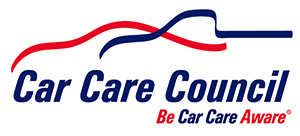Heavy snow can be fun for some, but many drivers dread treacherous winter driving conditions. Being car care aware will help ensure your vehicle is ready for harsh winter weather encountered on the road, says the non-profit Car Care Council.
“Many drivers overlook auto care this time of year, even with inclement weather in the forecast,” said Rich White, executive director, Car Care Council. “Driving in snow, especially in heavy snowfall or a blizzard, takes patience and preparation. A vehicle that is properly prepared for the elements can help you avoid an unplanned road emergency when the weather takes an unexpected turn for the worse.”
To ensure that your vehicle is ready for winter driving, the Car Care Council recommends that motorists perform a four-point winter maintenance check of areas that have direct impact on winter driving.
- Battery - Cold weather is hard on batteries, so it’s wise to check the battery and charging system for optimum performance. Because batteries don’t always give warning signs before they fail, it is advisable to replace batteries that are more than three years old.
- Antifreeze – Antifreeze (coolant) should be flushed and refilled at least every two years in most vehicles. As a reminder, do not add 100 percent antifreeze as full-strength antifreeze actually has a lower freeze point than when mixed with water.
- Brakes – Have the brake system checked. Brakes are critical to vehicle safety and particularly important when driving on icy or snow-covered roads.
- Tires – Check the tire tread depth and tire pressure, including the spare. If snow and ice are a problem in your area, consider special tires designed to grip slick roads. During winter, tire pressure should be checked weekly as tires lose pressure when temperatures drop.
- Oil – Be diligent about changing the oil at recommended intervals and check the fuel, air and transmission filters at the same time. Consider changing to low-viscosity oil in winter, as it will flow more easily between moving parts when cold. In sub-zero driving temperatures, drop oil weight from 10-W30 to 5-W30 as thickened oil can make it hard to start the car.
- Lights & Wipers – Make sure all exterior and interior lights are working so you can see and be seen. Check the fluid level in the windshield washer reservoir and replace wiper blades that are torn, cracked or don’t properly clean your windshield.
In addition, the council recommends a thorough vehicle inspection by a trusted professional service technician as winter magnifies existing problems such as pings, hard starts, sluggish performance or rough idling. Drivers should keep their vehicle’s gas tank at least half-full to decrease the chances of moisture forming in the gas lines and possibly freezing and stock an emergency kit with an ice scraper and snowbrush, jumper cables, flashlight, blanket, extra clothes, bottled water, dry food snacks and needed medication.
The Car Care Council is the source of information for the “Be Car Care Aware” consumer education campaign promoting the benefits of regular vehicle care, maintenance and repair to consumers. For a free copy of the council’s popular Car Care Guide or for more information, visit www.carcare.org.
